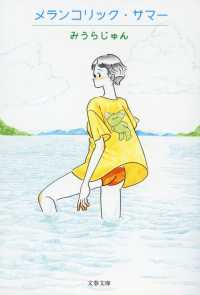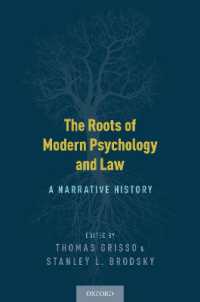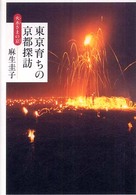Full Description
How can teachers make content-area learning more accessible to their students? This text addresses instructional issues and provides a wealth of classroom strategies to help all middle and secondary teachers effectively enable their students to develop both content concepts and strategies for continued learning. The goal is to help teachers model, through excellent instruction, the importance of lifelong content-area learning. This working textbook provides students maximum interaction with the information, strategies, and examples presented in each chapter.
This book is organized around five themes:
Content Area Reading: An Overview
The Teacher and the Text
The Students
The Instructional Program
School Culture and Environment in Middle and High School Classrooms.
Pedagogical features in each chapter include: a graphic organizer; a chapter overview, Think Before, Think While and Think After Reading Activities - which are designed to integrate students' previous knowledge and experience with their new learnings about issues related to content area reading, literacy, and learning, and to serve as catalysts for thinking and discussions.
This textbook is intended as a primary text for courses on middle and high school content area literacy and learning.
Contents
Contents: Part I: Content Area Reading: An Overview. T.W. Bean, H. Harper, Content Area Reading: The Current State of the Art. Part II: The Teacher and the Text. C.M. Fairbanks, N.L. Roser, D.L. Schallert, The Role of Textbooks and Tradebooks in Content Area Reading. B.B. Armbruster, Matching Readers and Texts: The Continuing Quest. Part III: The Students. K. McArthur, T. Penland, F. Spencer, P. Anders, Why Content Area Literacy?: Focus on Students. T. Gunning, Engaging Students Who Are Struggling Toward Success as Content Area Readers. B.A. Shearer,M.R. Ruddell, Engaging Students' Interest and Participation in Learning. L.M. Sutherland, S. Botzakis, E.B. Moje, D.E. Alvermann, Bringing Youth Culture Into Content Learning and Literacy. G.E. García, M.V. Montavon, Making Content-Area Instruction Comprehensible for English Language Learners. Part IV: The Instructional Program. G. Ivey, The Content Area Teacher's Instructional Role: Moving Students Toward Strategic Independent Reading. L. Mikulecky, Literacy Demands for Employment: How Jobs Have Changed and What Teachers Can Do. B. Moss, Facts That Matter: Teaching Students to Read Informational Text. C. Santa, L. Havens, S. Harrison, Teaching Secondary Science Through Reading, Writing, Studying, and Problem Solving. F.R. Curcio, A.F. Artzt, Reading, Writing, and Mathematics: A Problem-Solving Connection. E.M. Schell, Empowering Readings in Social Studies. C. Jago, Understanding Literature: Reading in the English/Language Arts Classroom. C. Cox, The Arts and Literacy Across the Curriculum. W.G. Brozo, Authentic Contexts for Developing Language Tools in Vocational Education. L. Gentile, V. McMillan, Reading and Writing in Sports and Physical and Health Education. D.L. Grisham, T.D. Wolsey, Literacy and Technology Integration in the English/Language Arts Classroom. N. Farnan, L. Fearn, Writing to Learn in the Content Areas. M.F. Graves, W.H. Slater, Vocabulary Instruction in the Content Areas. D.M. Ogle, Study Techniques That Ensure Content Area Reading Success. R. Hoffman, Using Concept Mapping as an Effective Strategy in Content Area Instruction. J.F. Almasi, Using Questioning Strategies to Promote Students' Active Discussion and Comprehension of Content Area Material. L. Kucan, Multigenre Reading/Writing in the Content Areas. J. O'Flahavan, R. Tierney, Moving Beyond Reading and Writing in the Content Areas of Discipline-Based Inquiry. R. Pritchard, S. O'Hara, Assessment in the Content Areas: Solving the Assessment Puzzle. Part V: School Culture and Environment. N. Frey, D. Fisher, Strategies for Engagement and Motivation in Middle and High School Classrooms. M. Mraz, R.T. Vacca, J.L. Vacca, Creating Response-Centered Learning Environments: Using Authentic Texts to Extend and Enrich the Curriculum. J. Barton,K.D. Wood, Lesson Planning for Best Practices in the Content Areas.








